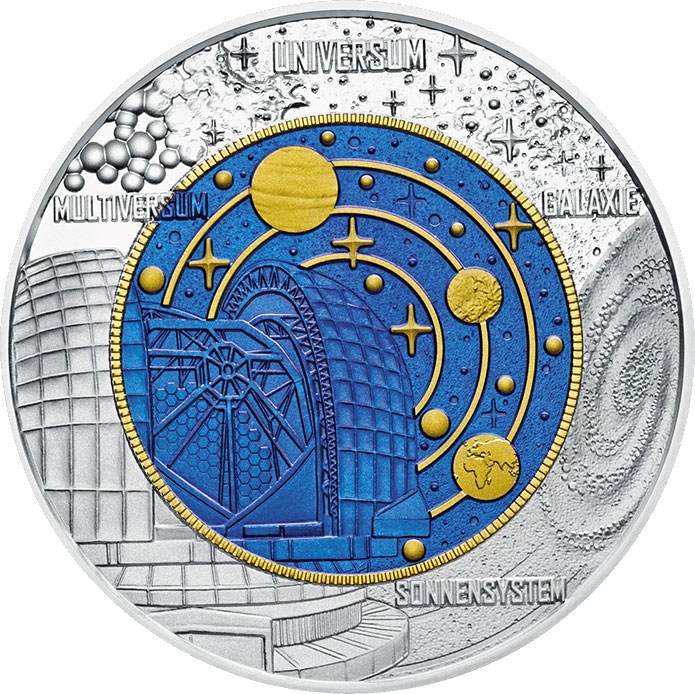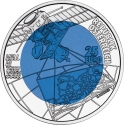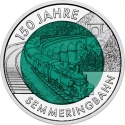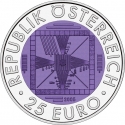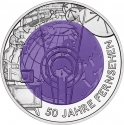You are about to finish your registration. Please check your mailbox (including spam folder). There should be a letter with a confirmation link. Check setting to make sure that your e-mail address is correct.
Send letter againDescription
For its 2015 ringed-bimetallic niobium and silver coin, the Austrian Mint tackles the largest topic possible — the universe. Cosmology, or the science of the origin and development of the universe, is the subject for the Special Uncirculated €25 coin.
Each year’s issue is composed of a disc of niobium surrounded by a .900 silver outer ring. The brilliant colors of the disc are achieved by anodic oxidation—a precisely controlled electrochemical process that deposits a fine layer of oxidized niobium on the surface of the disc. The color is determined by the thickness of the layer. From 2003 through 2013, each year’s design was processed with a single color; beginning in 2014, the finely detailed images began to be two-toned, with selectively colored elements set off against a solid background of a complementary color.
Niobium was chosen for the core due to its workability as a coinage metal and its low reactivity (which prevents its corroding where it comes in contact with the silver ring). Niobium’s larger application is in the aerospace industry, making it a thematic fit with the series, whose designs have focused on achievements in science and engineering.
Designed by Mag. Helmut Andexlinger, the coins are encapsulated, packed in a red case with a handsome grey slipcover, and comes with a certificate of authenticity.
Obverse

|
Depicts several planets or planetoids (including a recognizable Saturn), four-point stars and the European Space Agency's Rosetta probe—the first spacecraft to orbit a comet—all in yellow. Empty space, along with some stars, are colored blue. The word KOSMOLOGIE is inscribed on the "pill", while the Republic of Austria, 25 EURO and 2015 are inscribed on the silver ring. Various scientific symbols, equations and graphs are in the background. REPUBLIK ÖSTERREICH 2015 |
|---|---|
Reverse

|
Planets (Jupiter, Earth etc.) and their orbits (in yellow) arc over the European Extremely Large Telescope (in blue). The details of the telescope on the coin overlap from the outer silver ring into the blue niobium core. The E-ELT has been called the "world’s biggest eye on the sky.” One of the key objectives of the E-ELT is to find other earth-like planets. It will also study the formation and demise of stars, planetary systems and the planets themselves. The telescope is located in the Amazonas region of the Atacama Desert in Chile, at an altitude of 3000 meters or almost 10,000 feet. It will be four times as large as the largest telescope currently in use. Construction on the E-ELT began in early 2014 and is expected to end sometime in 2022. The entire project is estimated to cost more than one billion euros. MULTIVERSUM |
| Edge |
25 Euro
Silver Niobium Coin
Cosmology
Subscribe series
KM# 3238
Silver Niobium Coin
Cosmology
Characteristics
| Type | Commemorative Issue (Non-circulating) |
| Material | Bi-Metallic |
| Ring | Silver |
| Center | Niobium |
| Weight | 16.5 g |
| Diameter | 34 mm |
| Thickness | - |
| Shape |
|
| Alignment | Medal |
| Mint |
Austrian Mint
|

